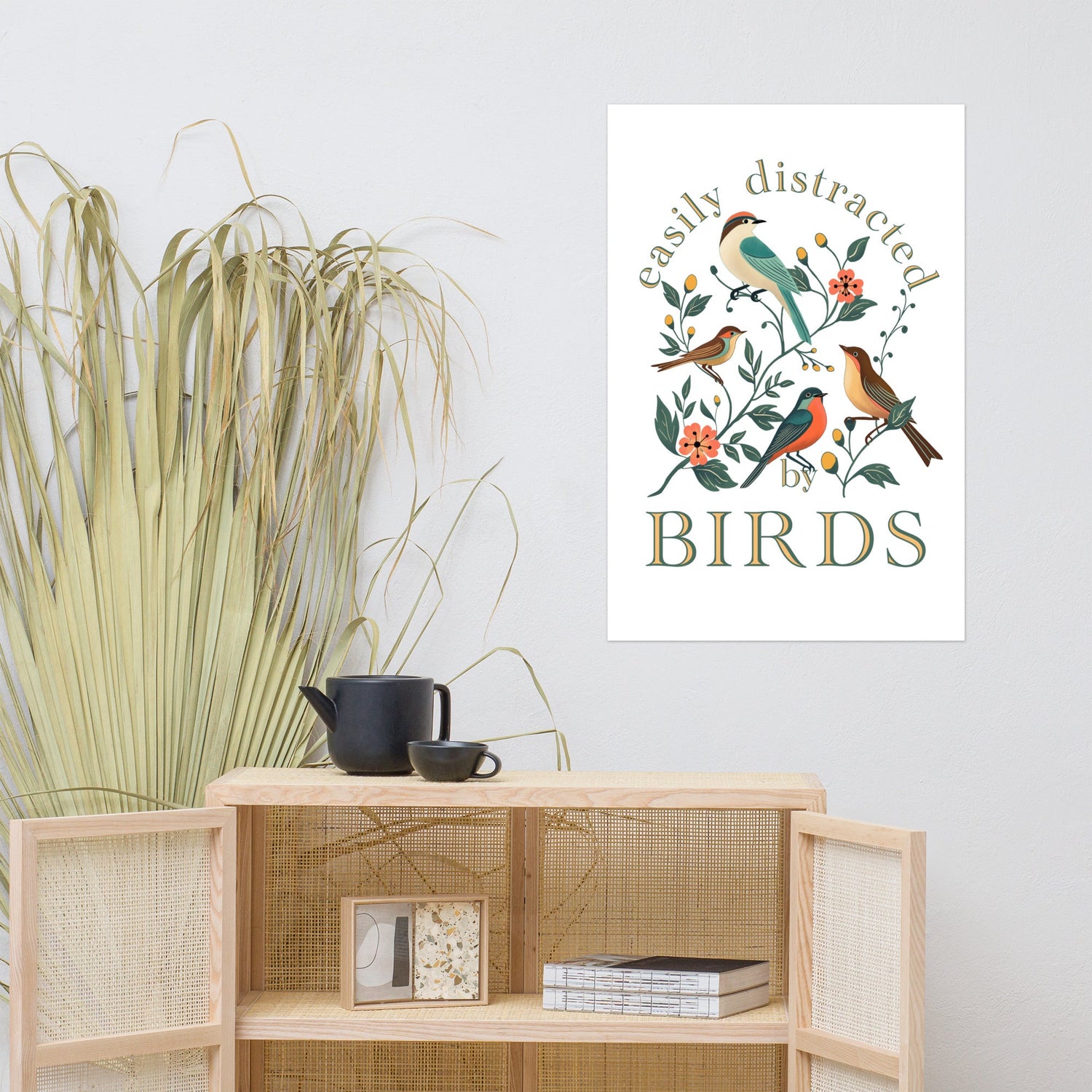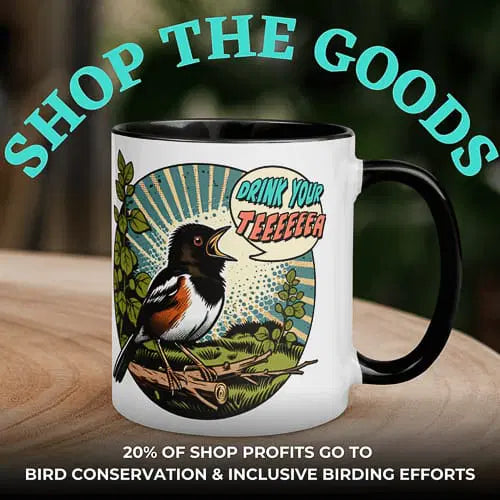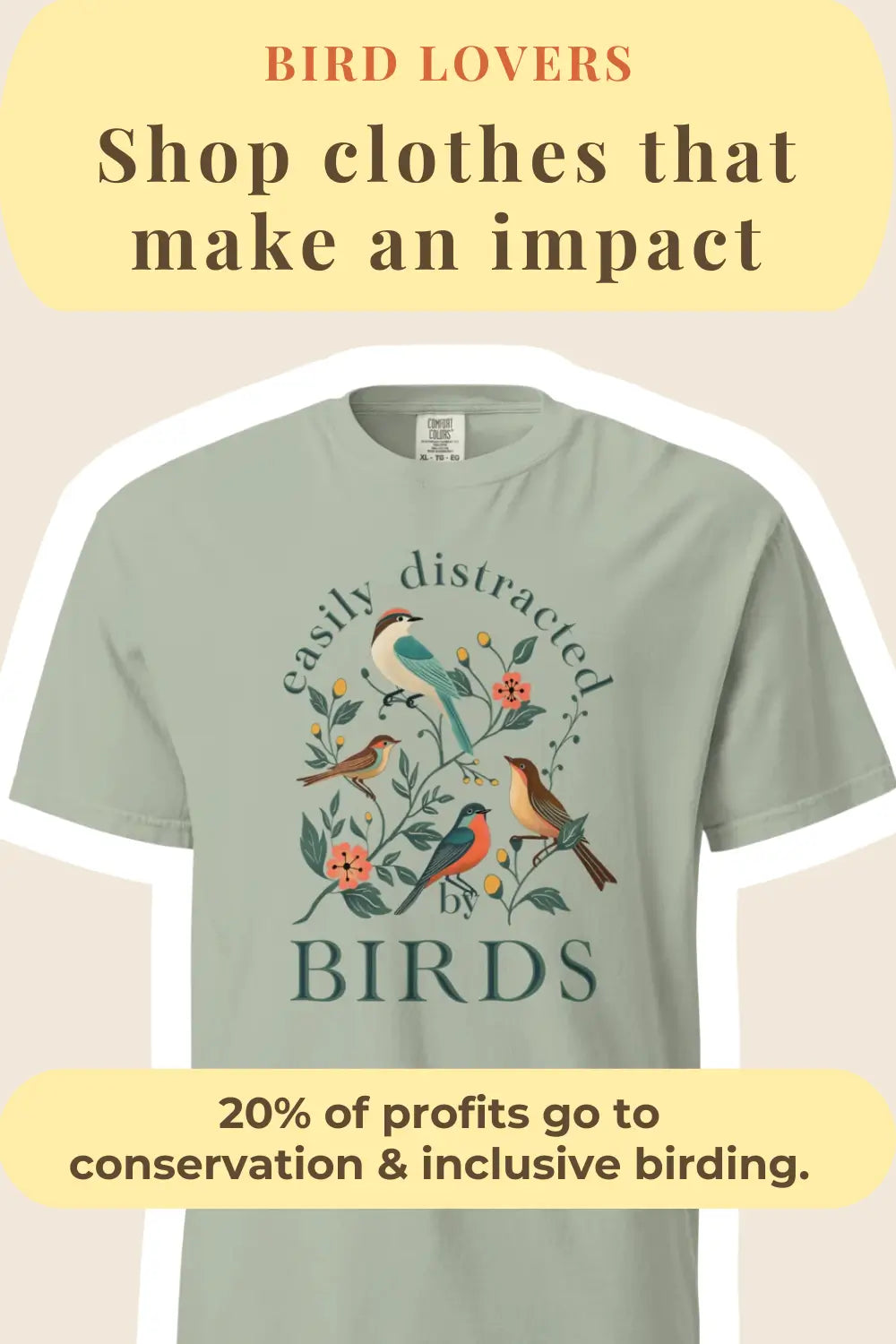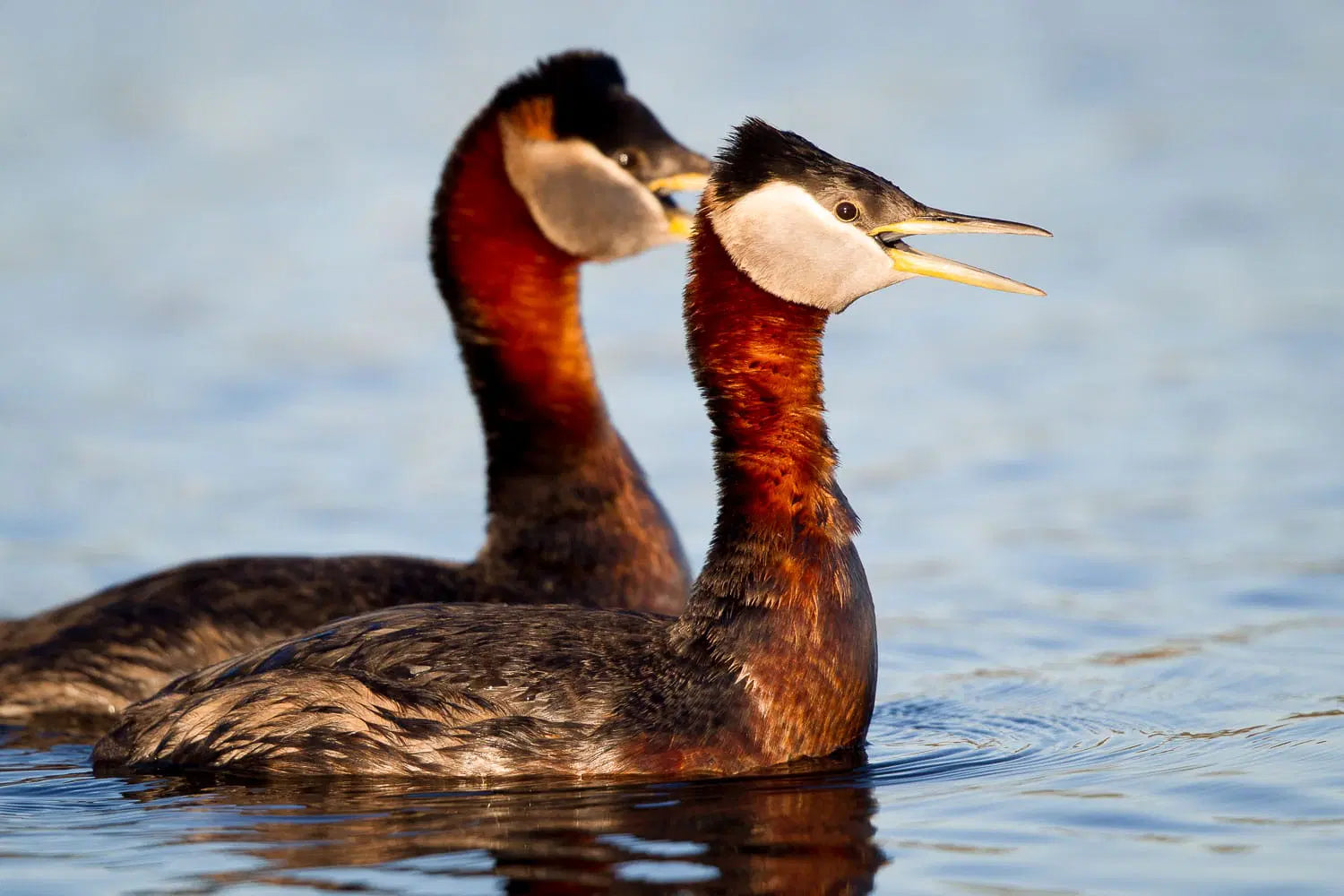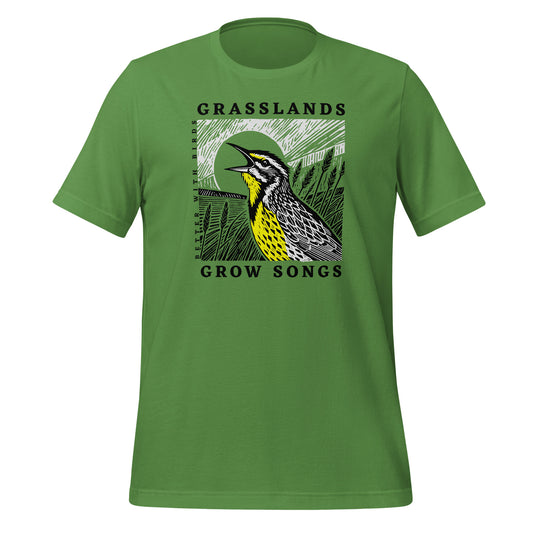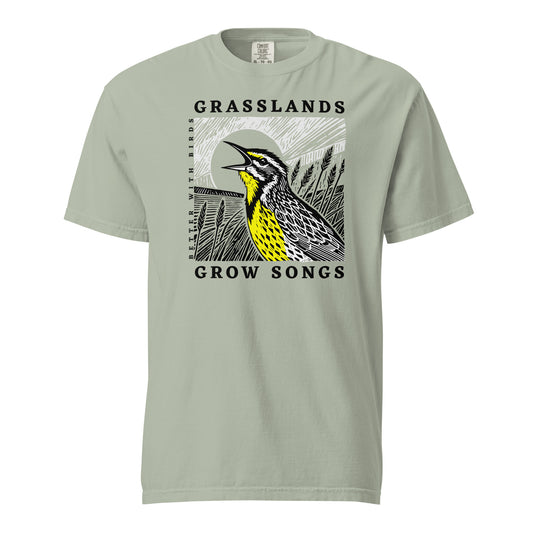How To Get Started In Birdwatching A Beginner’s Guide
Photos by Jaymi Heimbuch
Read Time: 12 minutes
Bird Identification , Tips & Advice
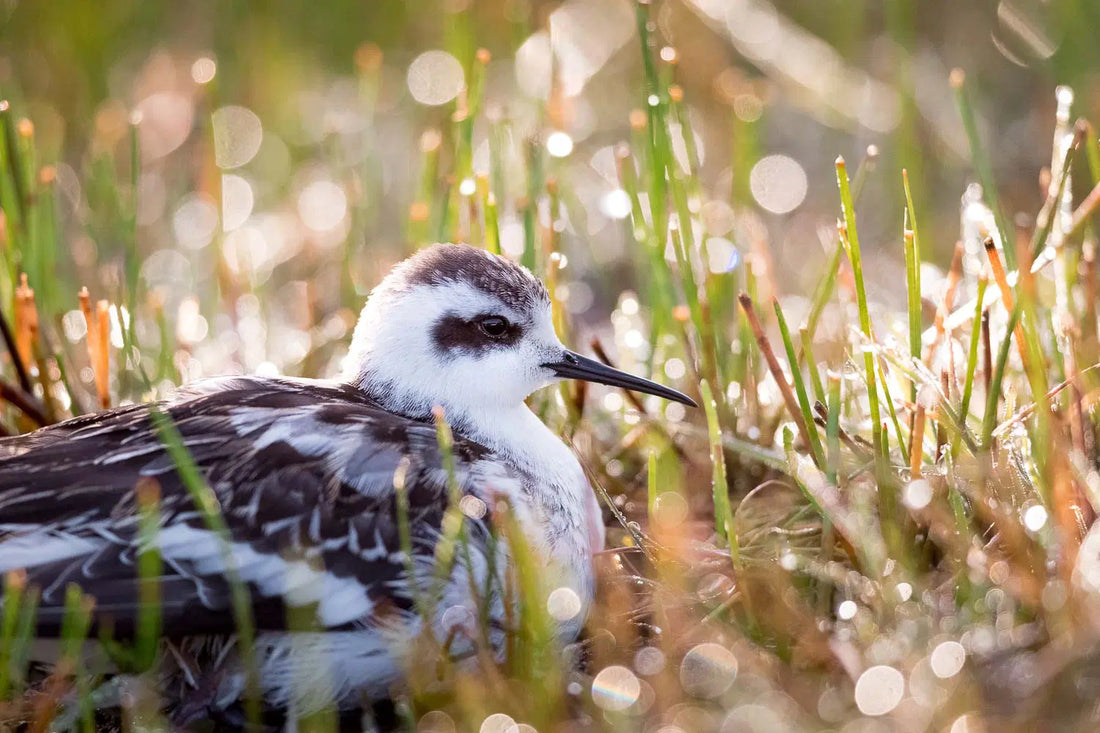
This post contains affiliate links. If you use these links to buy something, we may earn a commission at no additional cost to you. We only recommend products we fully support or use ourselves. Our full disclaimer
PIN THIS FOR LATER
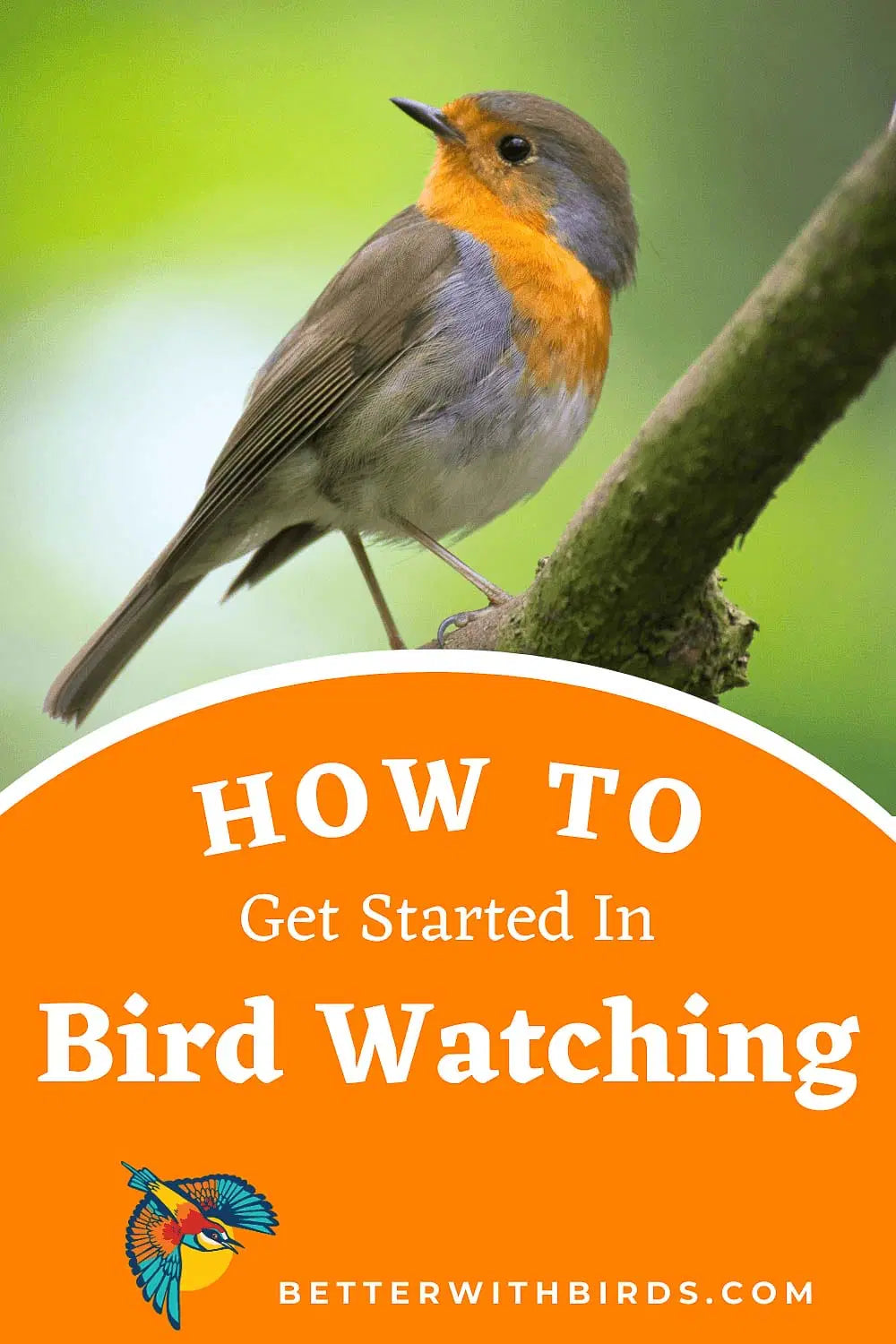
Contents
Feeling a flutter of interest in birdwatching but not sure how to dive in?
It can be downright overwhelming to figure out how to get started in birdwatching when you’re just starting out. What binoculars do you buy? How do you even begin to identify all those birds?
Our beginner-friendly guide is here to smooth your path into the birdwatching world.
We’ll introduce you to the basics – from binoculars to bird calls to birding clubs – and show you how to spot and identify new species. No complicated jargon, just simple, effective advice to get you outside and spotting with confidence.

An American dipper pair, the only aquatic songbird in North America. Even the most understated, dare we say “drab” species are actually spectacular in their own special ways.
Essential Birding Gear for Beginners
A great birdwatching experience doesn’t have to be complicated, but having the right birding equipment will certainly up your odds of a fulfilling experience.
That’s because having the right gear, especially binoculars, can transform your birdwatching from a casual glance into a deep dive.
1. Choosing The Right Binoculars
Think of binoculars as your superpower glasses. They pull distant dots into sharp, detailed views right before your eyes, all without scaring off your feathered friends. They enable you to admire the subtlest details from afar—like catching the glint in a bird’s eye or the twitch of its tail feathers.
Let’s zero in on what makes a stellar set of binoculars:
- Field of View: The wider, the better. You’ll catch more action without having to swing your specs all over the place.
- Magnification: When getting started, go for 8x. It’s the sweet spot where close-up clarity meets a steady, shake-free view.
- Weight: Opt for something that won’t feel like a workout. You want your birdwatching to be about the birds, not about the ache in your arms.
- Materials: Look for tough yet lightweight materials. Think waterproof and fog-proof—ready for whatever the sky decides to drop.
We break this down way more in this article on how to choose binoculars.
The 8×42 binoculars are a favorite among beginners for their balance of zoom and a generous lens that sucks in light, making dawn and dusk birding a delight.
You don’t need to splurge to start; many budget-friendly binoculars deliver a crisp enough view to make out those spectacular birding moments.
Ready to Scope Out Your Perfect Binoculars?
Check out our no-nonsense buyer’s guide to binoculars to find your ideal match. Let’s gear up and get you out there, seeing the bird world like never before!

There are more field guides out there than you can shake a Killdeer’s tail feather at! But don’t worry, it’s pretty easy to find a winner.
2. Selecting a Field Guide
Next, you’ll need a field guide. This is your go-to resource for learning about bird species and understanding avian biology and birding practices. A good field guide, coupled with your own observations, makes all the difference in learning birds quickly.
Choosing the Right Field Guide: Quick Tips
- Go Local: Opt for a guide that focuses on birds in your region. This zeroes in on the species you’re most likely to encounter, avoiding confusion with similar-looking birds from other areas.
- Look for Clear Illustrations: Good illustrations or photos are a must. They should clearly show key features like the bird’s size, typical postures, and distinguishing marks. Look for guides with images that depict birds in various poses and lighting conditions to help you recognize them in real life.
- Check for User-Friendliness: A well-organized field guide can save you from flipping pages in frustration. It should have a logical layout— grouped by bird color, size, or habitat. This makes it quicker to narrow down your options when you’re trying to match a real bird with its portrait in the book.
- Consider the Extras: Some guides go beyond simple identification. They include maps showing migration patterns, detailed descriptions of bird calls, and tips on birding etiquette. These extras can enrich your understanding of avian life and enhance your birdwatching practice.
- Durability Matters: Since birdwatching often involves braving the elements, look for a field guide that can withstand a bit of weather—water-resistant pages and a sturdy cover are good features to have.
A carefully chosen field guide, tailored to your local or regional area, combined with keen observation, will enrich your birdwatching adventures, turning each outing into a learning experience and making bird ID less of a guesswork and more of a skill you build with every trip outside.
If you’re based in North America and want to begin with just one fantastic guide that’s local enough and gets you started on the right foot…
We highly recommend one of these guides:
|
|
|
|
|
|
Wait, how’d that last one get in there?? 🤷🏻♀️ Ah well, you might as well pick it up, too, and start learning birds of the world! 🌏
3. Additional Accessories
Aside from binoculars and a field guide, there are a few additional accessories that can enhance your birdwatching experience.
NOTEBOOKS
Because, obviously.
Keeping a notebook with you is helpful for jotting down impressions of a bird or things you notice, which you can look up later when you get home.
It also helps you keep track of what you’ve seen, where and when, so you can plan future birding excursions.
You can use a simple pad of lined paper, or get a little fancy with journals made specifically for birders. Here are a few we really enjoy.
|
|
|
|
|
|
|
IN OUR SHOP
|
|
Smart Phone Apps
Say hello to birdwatching in the 21st century!
Smartphone apps have revolutionized the way we spot, identify, and record our feathered finds.
These digital tools can help birding feel so much more doable, especially when you’re in the middle of nowhere with just your smartphone.
Here’s a roundup of the best bird ID apps that should be on every birder’s mobile device:
-
Merlin Bird ID (by Cornell Lab): This user-friendly app uses your bird observations to offer instant ID help, drawing from a vast database powered by the Cornell Lab of Ornithology.
iOS ➞
Android ➞ -
Audubon Bird Guide: A comprehensive app with photos, bird calls, and detailed info on over 800 North American species. Great for both beginners and experienced birders.
iOS ➞
Android ➞ -
Sibley eGuide to Birds: Based on David Sibley’s popular guidebooks, this app features detailed illustrations, range maps, and descriptions, making ID a breeze.
iOS ➞
Android ➞ -
eBird: Also by Cornell Lab, eBird lets you record and share your sightings, contributing to global bird research, while helping you manage your own life lists.
iOS ➞
Android ➞ -
Larkwire: A unique app that focuses on learning bird songs through a game-like format, perfect for mastering the art of bird calls.
iOS ➞ -
BirdsEye: Ideal for finding hotspots for bird sightings and discovering new species around you. It’s like having a local guide in your pocket.
iOS ➞ -
Raptor ID: Specifically designed for raptor enthusiasts, this app offers detailed information and photos to help distinguish these majestic birds of prey.
iOS ➞
Android ➞
With these apps in your arsenal, you’re not just ready to embark on a birdwatching quest—you’re set to thrive in any birding adventure, whether deep in the woods or scanning the skies from your backyard.

More than likely there are birds living in your neighborhood that you’ve never spotted before. But put on your birding eyes and whamo – a whole new world opens up right at home.
Discovering Birds in Your Own Backyard
One of the true joys of birdwatching is that it doesn’t require distant travel—you can start right in your own backyard or neighborhood.
Your outdoor space, whether it’s a sprawling garden or a modest balcony, or a patch of trees down the street, can be a vibrant bird sanctuary.
Have a space at home where you can attract birds? Let’s talk some how-to!
Setting Up a Backyard Bird Feeder
Installing a bird feeder is an effective way to attract a diverse array of bird species.
You can do this even if you have just one window in your home or apartment – thanks to feeders with suckers that affix to windows!
Or, you can set up a feeder that hangs from a pole from a balcony, or or a stand-alone pole in your garden.
When choosing a feeder, opt for one that’s easy to clean and designed to keep the seeds dry.
Place it in a secure spot, away from places where predators can lurk and either within 3 feet or farther than 10 feet from windows to prevent collisions. Unless you have a window feeder, that is. (Window feeders are perfectly safe for birds. It gives them something to aim at, and they don’t hit the window.)
Regular maintenance is key; cleaning your feeder regularly promotes the health and safety of visiting birds.
And don’t forget about water! A water source, especially one that can prevent freezing during winter, can attract an even greater number of birds.
And if you’re aiming to attract hummingbirds, why not plant some native flowers with those big red blooms they can’t resist?

Before bird watching, your species list might include, “Those ones we always see in parking lots” and “The ones that hop under the table at the outdoor cafe.” But, they have names and fascinating natural histories that birding unlocks for you.
Learn Local Species First
The journey to becoming a seasoned birder starts with recognizing the regulars—the birds that visit your backyard or neighborhood daily.
Watch their behaviors, listen to their calls, and you’ll soon be able to identify them even without looking!
And perhaps even more importantly, you’ll start to develop muscle memory for what to notice about a bird in order to identify one you don’t already know. Size, shape, flight pattern, general behavior… it’ll be so much easier for you to notice the details that matter as you broaden your birding.
Keep in mind, of course, that birdwatching demands patience. So don’t lose heart if you can’t recognize every bird initially. Even around home, it takes time to get to know everyone.
Over time, you’ll learn to recognize different species and will get more enjoyment out of your birdwatching sessions with familiar birds.
We give 20% of all shop profits to bird conservation & inclusive birding efforts.

Visiting spots even just a wee bit outside your usual turf will reveal an amazing number of species. I never saw a horned lark until my adulthood, despite the fact that an easy habitat to view them in is just a couple hours from where I grew up.
Finding the Best Birdwatching Locations
Sure, your backyard or neighborhood is comfy, but the real action happens when you step out a bit. Let’s talk about leveling up your birdwatching game by exploring new locales.
Whether it’s a city park, a local nature reserve, or epic destinations like the Grand Canyon National Park or (gasp!) the bird-filled forests of South America, each location offers unique birdwatching experiences.
But, let’s start easy and just explore a bit farther from home.
Exploring Nearby Nature Spots
Hit up your nearest parks or natural areas, especially during the early morning—prime time for birds who apparently never learned to hit the snooze button.
This is when you’ll see them in their natural morning routines, from catching breakfast to chirping up a storm.
Pay attention to their behaviors and sounds, and try to identify different species.
You’ll be amazed at the diversity of bird life that can be found right in your own neighborhood – including species that are new to you!
Venturing into Different Habitats
Got your birdwatching basics down? Great, now get ready to head to habitats you haven’t visited before.
Forests, coastal areas, and the intersections of different habitats (think forest edges or those areas where land meets water) are particularly rich in avian life.
Following birding trails set by local experts can lead you to a loop of drivable birdwatching sites known for their special opportunities to see birds.
Some habitats you can explore include:
- Forests
- Wetlands
- Grasslands
- Coastal areas
The more habitats you explore, the more bird species you’re likely to encounter.
We give 20% of all shop profits to bird conservation & inclusive birding efforts.

Early mornings. Early mornings. Early mornings. Let’s say it all together now: EARLY MORNINGS. And also mid-day, afternoons, evenings… but oh my goodness the magic of early mornings. I’ll never forget the pink dawn spent with this common loon.
Timing Your Birdwatching Adventures
Birdwatching isn’t just about where you go—it’s also about when you go.
Birds are most active during certain times of the day and year, so timing your birdwatching adventures effectively can greatly enhance your experience.
The Early Bird Gets the Worm
Ever heard the saying “the early bird gets the worm”?
Well, it applies to birdwatchers too! Birds are most active between dawn and 11am, particularly in the spring and early summer seasons. They’re also typically more vocal in the early morning, providing auditory cues that can help you identify and locate them.
Even on overcast days, bird activity can extend beyond the usual morning hours, so don’t worry if you’re not much of a morning person—you’ll still have plenty of opportunities to enjoy birding.
Seasonal Considerations
Birdwatching is a year-round activity, but different seasons bring different birding opportunities.
Spring and fall are peak migration seasons, offering the chance to see a greater variety and number of birds.
Some birds, like American Robins, often signal the arrival of spring, while others, like Red-winged Blackbirds, can be seen in large flocks during the winter season.
Consider participating in seasonal bird festivals to join field trips, meet experts, and connect with fellow enthusiasts. Now, do you feel prepared to plan your birdwatching escapades?
We give 20% of all shop profits to bird conservation & inclusive birding efforts.

Some species are only “common” during certain seasons. For instance, snow geese that turn up during migration time on the Pacific Flyway.
Bird Clubs and Communities
Birdwatching isn’t just a solitary activity—it can also be a social one. Joining a birding club and local birdcentric communities, especially those endorsed by the American Birding Association’s guidelines, can offer a wealth of benefits.
This includes learning from experienced birders to sharing your birding experiences with like-minded people, all while adhering to a code of ethics that emphasizes minimizing impact on wildlife, respecting nature and people, and promoting inclusivity within the birding community.
Finding a Local Bird Group
Joining a local bird group is a great way to immerse yourself in the birding community.
These groups can be found through the American Birding Association or by searching on platforms like Google and Facebook.
Local Audubon Society chapters frequently host events and educational opportunities, including field trips and classes for birdwatching enthusiasts.
Not only will you learn more about birdwatching, but you’ll also make new friends who share your passion for birds.
Participating in Community Events
Community events like birding tours and birdwatching programs are great opportunities to engage with the birding community.
These events allow you to learn about bird movements, improve your identification skills, and share your sightings with others.
You can also connect with birders of all abilities through state or regional birding pages on social media.
And let’s not forget about birdwatching festivals, where you can meet local bird groups and even join these organizations.
With proper planning, these community events can greatly enhance your birding experience.

Let’s all raise our voices and sing as loudly as a common yellowthroat for building big, welcoming, joyful and kind birding communities!
Diversity, Inclusivity and Community in Birdwatching
Birdwatching is a hobby that’s open to everyone, regardless of age, background, or experience level. However, it’s important to ensure that everyone feels welcomed and included in the birding community.
This means creating environments where newcomers feel safe and encouraged to participate, and where exclusive stereotypes are actively challenged.
Groups like the Black AF in STEM and Feminist Bird Club are on the frontlines, pushing for a birdwatching scene that’s inclusive of all genders, races, and abilities.
And with initiatives like Black Birders Week, the birding community is increasingly spotlighting the diverse faces that make up our community, showcasing that birdwatching is as much about people as it is about the birds.
This isn’t just about inclusivity for the sake of it.
It’s about weaving a rich, vibrant community fabric that supports, teaches, and grows together.
It’s about ensuring that nature appreciation and bird conservation aren’t just causes, but a shared mission that benefits culture and community as much as it benefits habitats and species.
So, whether you’re a seasoned birder or a beginner, remember that every birdwatcher has a unique perspective to offer.
Let’s celebrate diversity, promote inclusiveness, and cultivate a birding community as rich and varied as the birds we admire.
We give 20% of all shop profits to bird conservation & inclusive birding efforts.

Whooooo did you see today? One of the fun reasons to keep a birding record is to jot down when you see a species for the first time – like the day I saw my first burrowing owl. (Which happened to be at a soccer field in a busy urban area. Go figure.)
Recording Your Birdwatching Journey
Recording your birdwatching journey can be a rewarding part of the birding experience. Not only does it help you remember the birds you’ve seen, but it also allows you to contribute to bird conservation efforts through citizen science projects.
Starting Your Life List
One way to record your birdwatching journey is by starting a life list. This is a personal record of all the bird species you’ve confidently identified.
It serves as both a log and a memory scrapbook of your birding adventures.
Apps like the Merlin Bird ID can facilitate the record-keeping process, allowing you to input specific details of your sightings, including location and date.
Ensure authenticity by only adding birds to your life list that you have genuinely seen or heard.
Whether you prefer digital or hard copy records, keeping track of your bird sightings can enhance your birdwatching experience and contribute to bird conservation efforts.

From the “What even IS that??” moments to “I know that song but I just can’t ever remember who is singing it” situations, birding can have its frustrations. Luckily, there’s a lot of help out there. (White-faced ibis.)
Overcoming Challenges in Birdwatching
Birdwatching can be a challenging hobby, especially for beginners. It takes patience, practice, and a keen eye to identify different bird species and understand their behaviors. But don’t worry—we’ve got some tips to help you overcome these challenges.
Dealing with Frustration
Sure, birdwatching can test your zen, especially when those flittering beauties zip through the trees or play hide-and-seek behind leaves.
But, you can make a lot of progress without too much headache by zooming in on the basics.
Note details such as:
- Size: Is it sparrow-sized? Or a hawk-sized honcho?
- Colors: Sporting flashy feathers or more muted tones?
- Patterns: Stripes, spots, or something else?
- Shape: Chunky, sleek, or somewhere in between?
- Flight Pattern: Does it zip from here to there in short spurts? Glide? Have an undulating flight?
These details help you seriously narrow down the list of who you might be looking at, and help you become more observant overall. And that, friend, leads to far less frustration.
Remember, birding is a learning process, and it’s important to set realistic expectations for your bird identification journey.
And! When the going gets tough, the tough get techy.
A solid bird identification app doesn’t just help you pin down names; it turns each birding trip into a mini-adventure, easing those beginner’s blues.
Seeking Guidance
Feeling stumped? If you’re finding it difficult to identify birds or understand their behaviors, don’t hesitate to seek guidance.
Here’s how to tap into the birdwatcher’s buddy system:
- Experienced Birders: These are the folks who’ve been at it for years; their brains are treasure troves of beaky knowledge.
- Bird Clubs: Like social clubs, but everyone’s there for the birds.
- Online Birding Groups: Perfect for midnight oil burners looking to swap stories or ID tips.
- Birdwatching Courses: From casual webinars to in-depth field classes, there’s something for every level.
- Joining a local bird club: Jump into real-life bird adventures and make some feather-friendly friends.
These resources can provide valuable advice and support, as well as enhance your birdwatching skills.
Keep in mind, all birders started as beginners and the birding community, including other birders, is typically supportive and welcoming.

As you learn to bird, you’ll learn about the dos and don’ts. But most of it is all common sense. Think about the birds and others wellbeing first, and you’re pretty much good to go. (Male harlequin ducks in a tide pool.)
Ethical Birdwatching Practices
As birdwatchers, we carry a dual responsibility: cherishing our feathery friends and the places they call home.
Following the ethical guidelines set by the American Birding Association, we strive to tread lightly and treat our birding environments with the utmost respect.
These guidelines serve as a compass to guide us, focusing on minimizing our impact on wildlife, respecting the natural world, and fostering a welcoming community among birders.
Respect for Nature
The golden rule in birdwatching? Observe from a distance.
It’s all about watching without interfering. Keep activities low-key, manage pets responsibly in nature areas, and avoid anything that could disrupt the natural habitats.
By doing so, we ensure that birdwatching remains a sustainable joy for future generations.
Courtesy Among Birders
Birdwatching is as much about community as it is about individual discovery.
Being courteous means being a supportive, helpful, and inclusive presence within the birdwatching community. It’s about sharing spaces and insights graciously, learning from each other, and growing together in our shared passion.
Let’s foster a birding community that’s friendly, respectful, and welcoming to all.
We’re excited to welcome you to birding!
Birdwatching isn’t just a hobby; it’s a full-on expedition into the heart of nature that can seriously boost both your mood and your step count.
Whether you’re cozied up by your window with a cup of coffee, trekking through varied landscapes, or mingling with fellow bird enthusiasts at festivals, birdwatching invites you into a world of unique experiences and fresh knowledge.
But let’s be clear, birdwatching is way, WAY more than just ticking off species on a list.
It’s about tuning into the subtle quirks of bird behaviors, showing respect for their natural homes, and playing a part in safeguarding their future.
So, gear up with your binoculars, load up a birding app, and get the flock outside. The vast, feather-filled world of birdwatching is waiting to amaze you!
